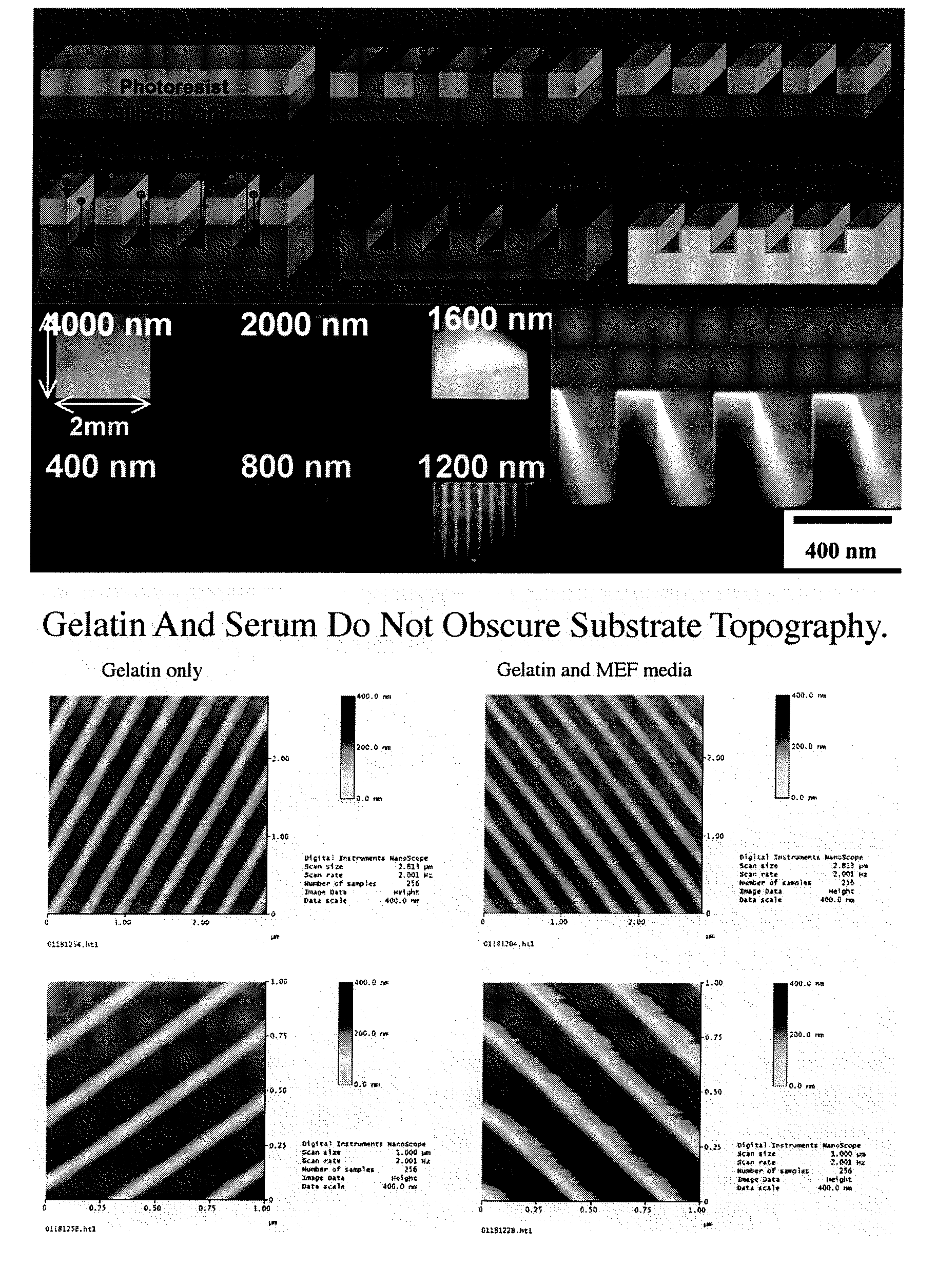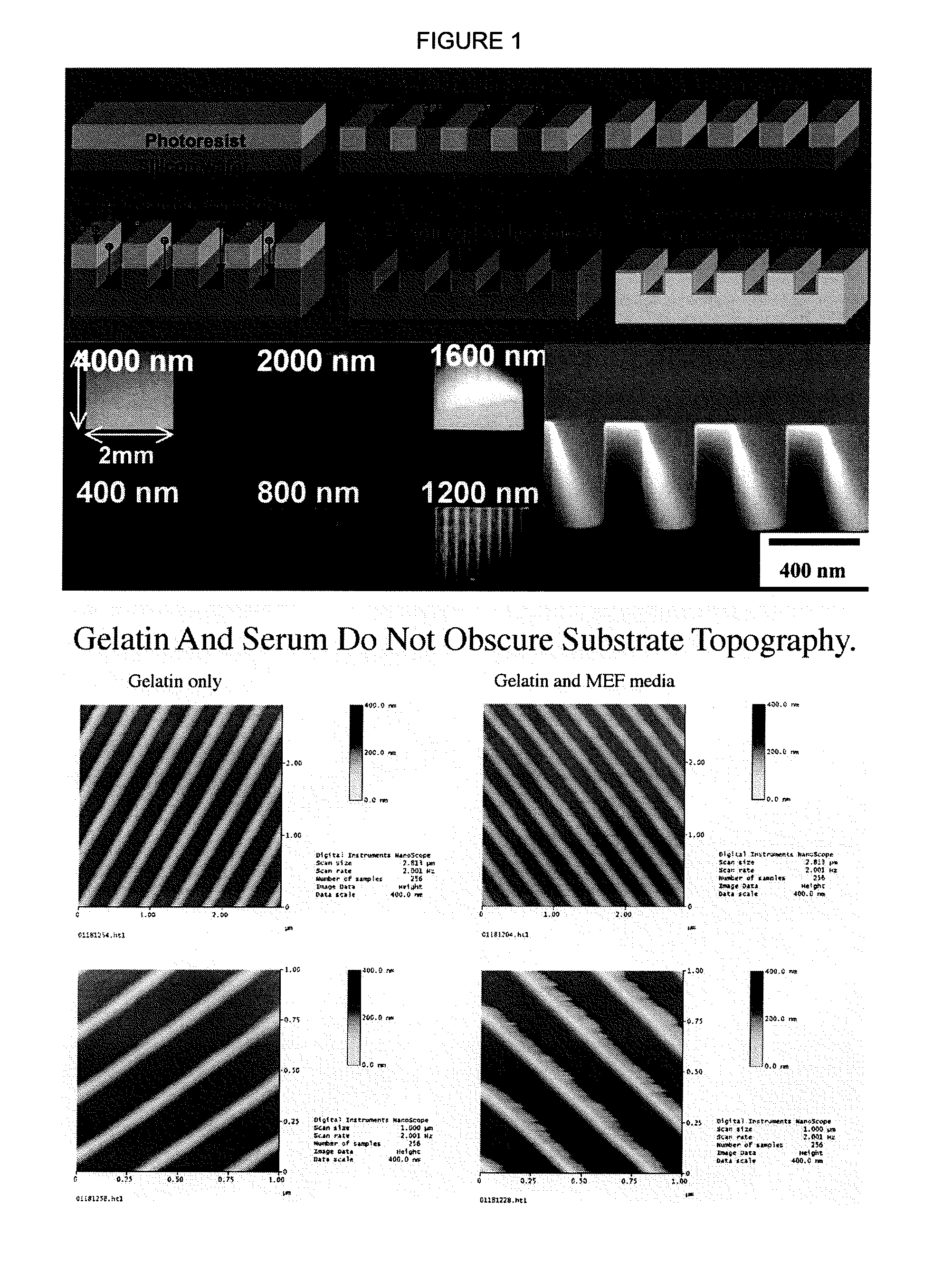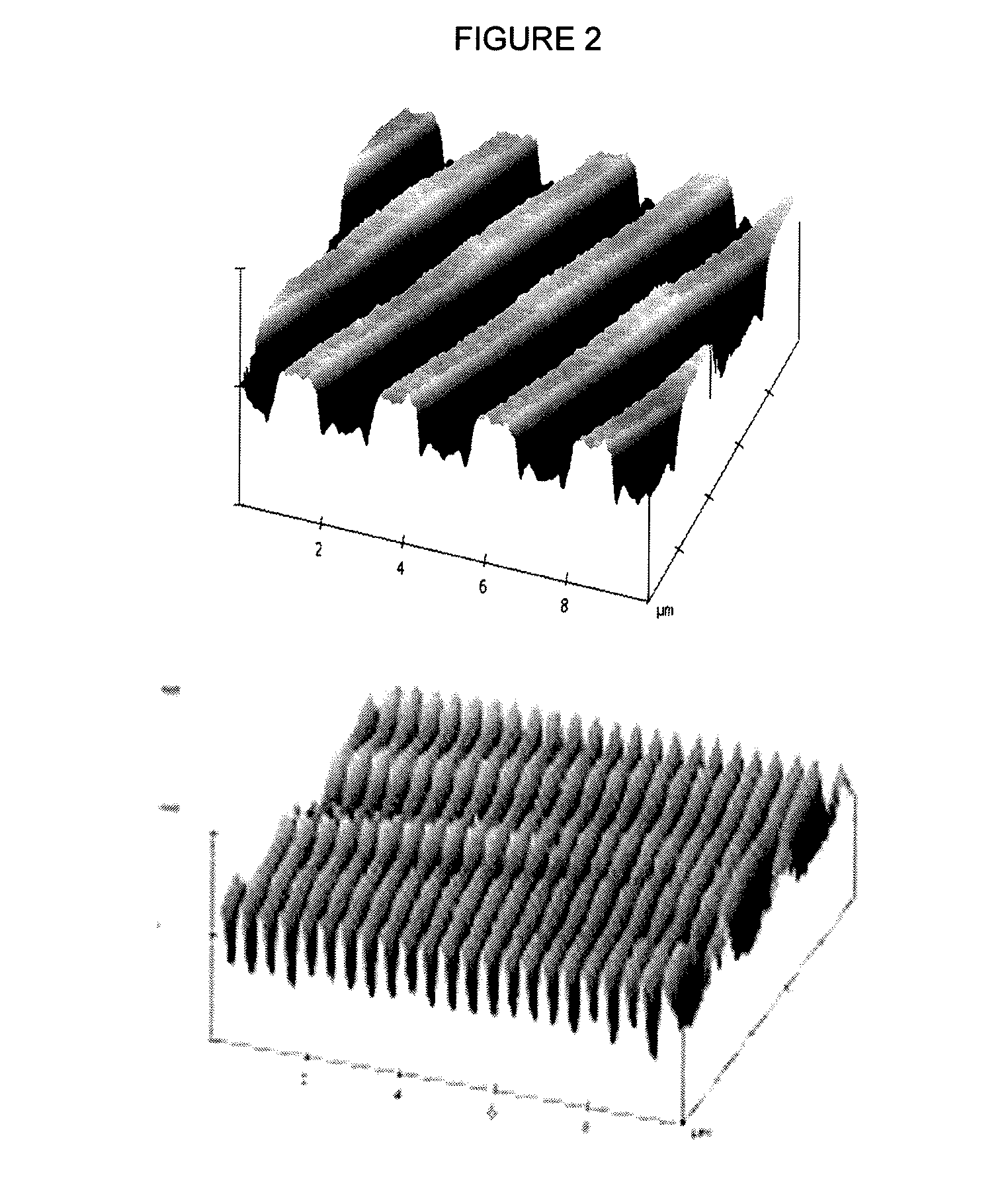Use of topographic cues to modulate stem cell behaviors
a topographic cue and stem cell technology, applied in the field of cell growth and culture, can solve problems such as the size of nanofibers
- Summary
- Abstract
- Description
- Claims
- Application Information
AI Technical Summary
Benefits of technology
Problems solved by technology
Method used
Image
Examples
example 1
Stem Cell Culture
[0065]H1 HES cells were maintained following the traditional WiCell protocol (WiCell Research Institute, Madison, Wis.), with minor alterations to the “pick to remove” method. In brief, tissue culture polystyrene was first coated with gelatin (0.1% solution in water). CF-1 strain mouse embryo fibroblasts were irradiated with about 8500-10000 cGray from cesium 137 before seeding as a feeder layer. HES cells were passaged onto fresh MEF feeder layers every 7 to 12 days and were fed daily at least six days a week. Collaginase treatment was used to harvest cells for passage after removing the differentiated portions of colonies. Areas of HES cell colonies that had differentiated were defined by morphological and non-refractive characteristics through a dissecting microscope and their positions marked with a marker (Sharpie®). Differentiated regions were removed from HES cell cultures by aspiration with Pasteur pipettes that had been modified to have a 25-200 μm inner ti...
example 2
Fabrication of Patterned Surfaces
[0080]A range of defined size topographic features was generated utilizing lithographic techniques pioneered for manufacturing computer chips. As shown in one embodiment in FIG. 1, a single patterned substrate can provide a range of feature dimensions. For example, these can range from about 400 nm to about 4000 nm pitch with intervening planar control regions. In a preferred embodiment shown in FIG. 1, the ridge: groove ratio is about 1:1.
[0081]The top panel in FIG. 1 shows a simplified schematic of the manufacturing protocol of patterned surfaces. Six steps are shown: coating, X-ray lithography, development, reactive ion etching, cleaning, and low pressure chemical vapor deposition.
[0082]The middle left panel shows a chip that has six patterned areas of six different pitches, ranging from 400 nm to 4000 nm. The colors of the patterned areas, which can be seen in U.S. Provisional Patent Application Ser. No. 60 / 851,662, incorporated herein by referen...
example 3
Migration
[0085]As shown in FIG. 5, topographic cues promote migration with retention of self-renewal properties. A HES cell colony was plated at the intersection between a flat surface (to the left of the vertical line, i.e. intersection) and a topographically patterned surface (to the right of the vertical line, ie. intersection). Within 48 hours, the presence of 1600 nm pitch topography promoted cell migration along the ridges.
PUM
 Login to View More
Login to View More Abstract
Description
Claims
Application Information
 Login to View More
Login to View More - R&D
- Intellectual Property
- Life Sciences
- Materials
- Tech Scout
- Unparalleled Data Quality
- Higher Quality Content
- 60% Fewer Hallucinations
Browse by: Latest US Patents, China's latest patents, Technical Efficacy Thesaurus, Application Domain, Technology Topic, Popular Technical Reports.
© 2025 PatSnap. All rights reserved.Legal|Privacy policy|Modern Slavery Act Transparency Statement|Sitemap|About US| Contact US: help@patsnap.com



